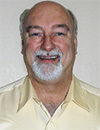Some farmers see thin alfalfa (less than 40 stems per square foot) and think about overseeding to improve the stand and yield. Research suggests that the benefits of overseeding on yield are not seen unless the alfalfa stand is less than five plants per square foot, or 40 stems per square foot, and may not be seen even then. Older alfalfa stands with a heavy weed load of species such as dandelion or quackgrass may produce greater return for legume credits and rotation to another crop rather than overseeding to extend the stand life.
Soil test before overseeding to ensure that soil pH and fertility are adequate, else both existing alfalfa and new seedings will have reduced growth due to low soil pH or nutrient deficiency.
Interseeding alfalfa into alfalfa stands
If poor stand establishment occurs, one can reseed alfalfa within one year without concern about autotoxicity (existing alfalfa plants giving off compounds that inhibit germination and growth of new seedings). However, it is generally recommended to disc the field first to kill the few established plants so that the new seed establishes uniformly without competition from existing plants.
Overseeding alfalfa stands over one year old with alfalfa seed is not recommended due to the likelihood of autotoxicity. New seedlings will often emerge, but they will die out before contributing to the stand. Figure 1 shows data from California where alfalfa was seeded into alfalfa in September with either zero, six or 10 existing alfalfa plants per square foot.

About 50 seedlings emerged per square foot with no alfalfa and about 40 new seedlings emerged per square foot with six or 10 plants per square foot. The new seedlings were spindly when established with existing alfalfa, and many seedlings died over the first winter; most were gone by fall of the first full year. This is typical of what has been seen in the Midwest, where seedlings emerge from interseeding alfalfa into alfalfa and then die, usually within the same growing season.
Interseeding red clover into alfalfa stands
Red clover can be seeded into thin alfalfa stands. It is not affected by alfalfa autotoxicity and will establish. It can withstand the competition from existing alfalfa plants and contribute to yield.
Red clover can be harvested at the same times that one would harvest alfalfa to obtain highest quality. One disadvantage of red clover is that it cures to a dark brown/black color, which some producers find visually undesirable. However, if harvested and stored properly, red clover’s quality – even with the brown color – is very comparable to alfalfa forage quality.
Interseeding red clover is only recommended where the forage will be harvested as haylage since the clover dries more slowly than alfalfa, so the windrow will have wetter spots where there is more red clover; attempting to dry the alfalfa/red clover mixture for hay will result either in wet spots with heating damage in bales or drying to have leaf loss from the alfalfa.
A seeding rate of 6 pounds red clover per acre is recommended. Make sure the clover in inoculated with red clover rhizobium, since it requires different rhizobium than alfalfa.
Interseeding annual or perennial grasses into alfalfa stands
Ideally, cool season grasses should be overseeded in March/April as soon as the soil is dry enough to plant into and the extent of winter injury damage is evident. These grasses grow in cooler weather than alfalfa, so early planting will give them a chance to get started without competition from the alfalfa.
While a no-till drill is desirable, seeding with a conventional drill will also work. Tillage is usually unnecessary if seeding is done early and the soil is moist. Broadcast seeding seldom works because seeding is too late for spring freeze/thaw cycles to incorporate the seed.
Annual or perennial ryegrasses may be a best fit since they germinate quickly, grow well in cool spring weather and are ready to harvest when alfalfa is ready for first cutting. However, ryegrasses are susceptible to heat and drought and may not produce much over summer. They may also die the first winter.
Orchardgrass, meadow fescue or tall fescue can be interseeded; however, they establish much more slowly than ryegrasses and will contribute little to forage yield during the first 90 days after seeding. However, these grass species will survive winter and continue into the next year.
A mixture of annual and perennial ryegrass is recommended for good early spring growth (annual ryegrass) and better summer yield (perennial ryegrass); the mixture should be interseeded at the rate of 4 to 6 pounds per acre. Also, orchardgrass and fescues should be interseeded at the rate of 4 to 6 pounds per acre.
Interseeding small grains into alfalfa stands
Small grains can be interseeded into thin alfalfa stands. Oats, triticale and spring barley have been used successfully. All will produce more yield on first cutting than thinned alfalfa but will reduce alfalfa growth and yield. So these might be beneficial if forage supply is low in the spring. Oats or triticale will produce the highest additional yield.
The recommended seeding rate for small grains is 1 bushel per acre. Higher seeding rates will suppress the alfalfa.
Summary
Data from research at the University of Wisconsin Lancaster Research Station show that several forage species can establish in thin alfalfa stands (four to five plants per square foot). Seedlings of all species will emerge, and the grower will think that interseeding helped yield due to the new plants. However, any interseeding reduces alfalfa yield so that interseeding yielded no more than a thin stand of alfalfa without interseeding (Table 1).

The best option with today’s high fertilizer prices and corn value is to
turn the stand over to take the legume and rotational credits for corn
production and replant alfalfa into new fields.










